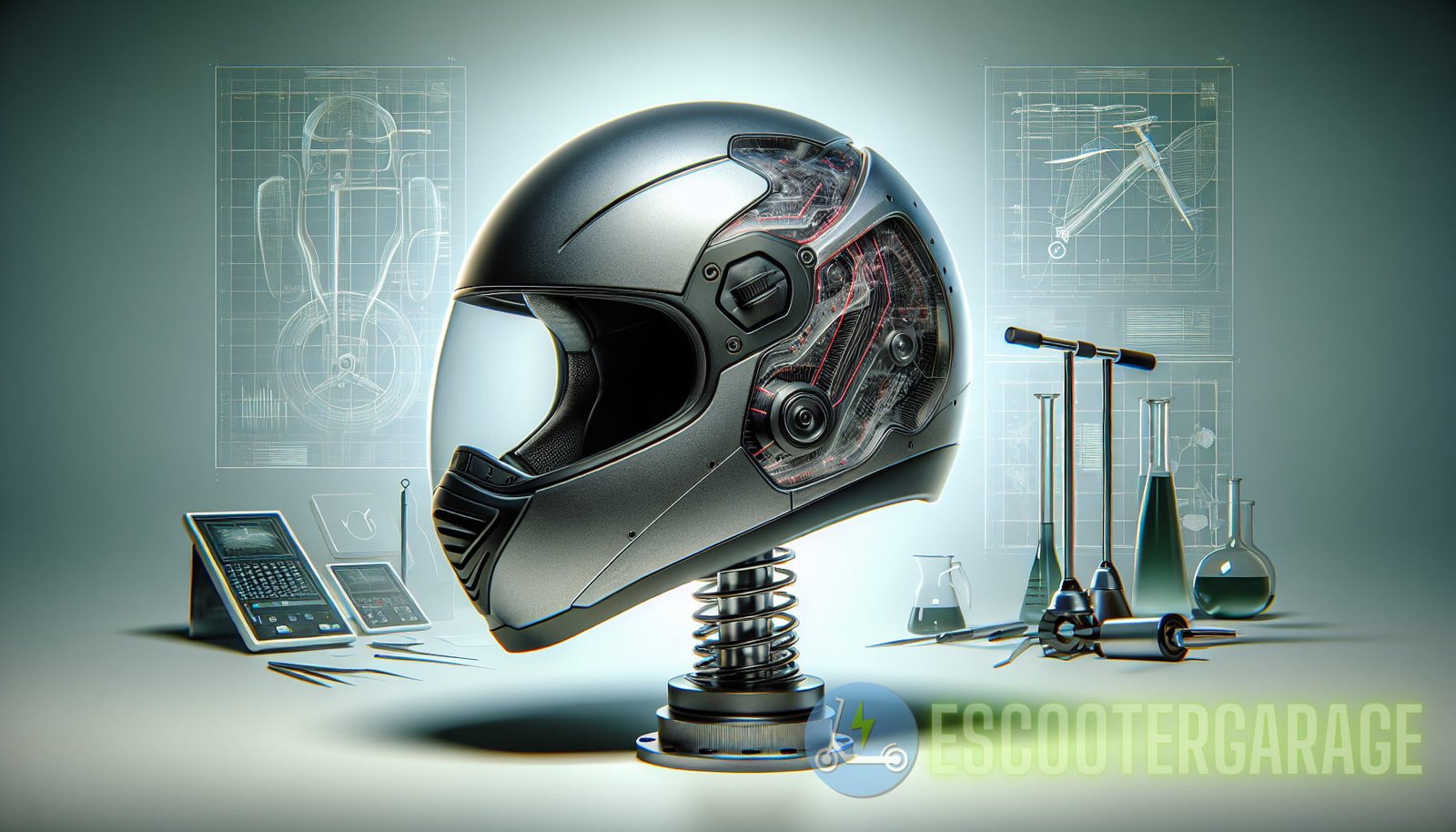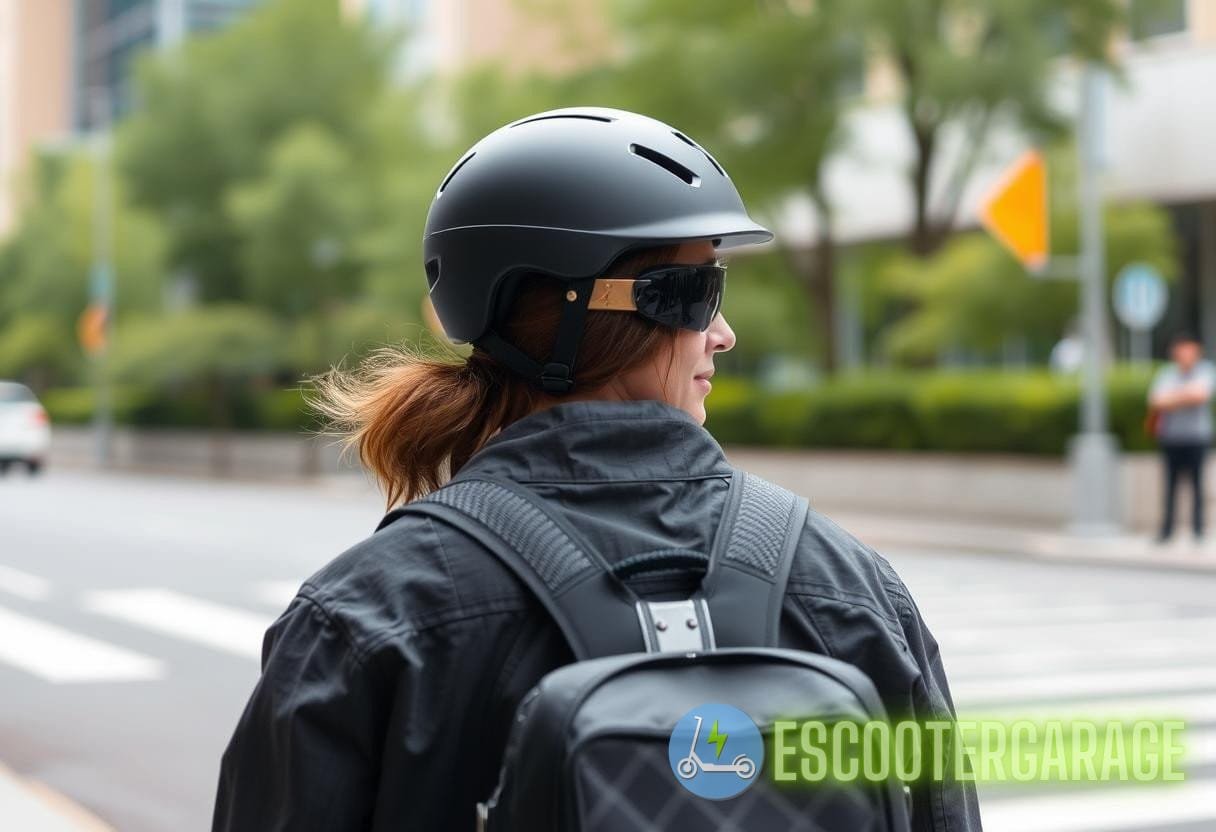Pioneering Materials: Unveiling Breakthroughs in eScooter Helmet Safety
E-scooters have quickly become a popular mode of transportation in cities around the world. With their compact size and eco-friendly nature, they provide a convenient and efficient way to navigate urban areas. However, the rise in e-scooter usage has also brought concerns about safety, particularly when it comes to head injuries.
According to the Centers for Disease Control and Prevention (CDC), head injuries account for the majority of e-scooter-related injuries, with many riders choosing not to wear helmets. To address this issue, helmet manufacturers and researchers have been actively working on developing innovative materials and technologies to make e-scooter helmets safer than ever before.
The Importance of Helmet Safety
Helmets are essential safety gear for e-scooter riders, as they provide protection for the head in the event of a fall or collision. According to a study published in the journal Head Injury Medicine, wearing a helmet can reduce the risk of head injury by up to 70%.
In the case of e-scooters, riders often travel at higher speeds than cyclists, making the risk of head injury even greater. The impact of a fall or collision can lead to severe head trauma, including concussions, fractures, and traumatic brain injuries. Therefore, it is vital that e-scooter helmets are designed to effectively absorb and distribute impact forces to minimize the risk of injury.
The Evolution of Helmet Materials
Traditional bicycle helmets have long relied on expanded polystyrene (EPS) foam as the main material for impact absorption. EPS foam is lightweight and effective at cushioning impact, but it has certain limitations. For example, it can only absorb impact forces once, meaning that if a helmet is subjected to multiple impacts, its protective capabilities are compromised.
Recognizing the need for better helmet materials, researchers have been exploring alternative options for improved safety. One promising material is shear thickening fluid (STF), a non-Newtonian fluid that changes its viscosity under mechanical stress. When at rest, STF is liquid-like, allowing it to flow and conform to the shape of the head. However, upon impact, the fluid rapidly changes its state, becoming solid-like and providing enhanced protection.
Another material that has shown promise is expanded polypropylene (EPP) foam. EPP foam is similar to EPS foam but has higher energy absorption capabilities and is more resistant to multiple impacts. It is constructed using tiny beads of polypropylene that are fused together, creating a material that can withstand repeated impacts without losing its protective properties.
Nanotechnology: Revolutionizing Helmet Design
Advancements in nanotechnology have also played a significant role in enhancing helmet safety. Nanomaterials are extremely small in size, typically measuring less than 100 nanometers. At this scale, materials exhibit unique properties that can be manipulated to provide improved performance.
Carbon nanotubes are one type of nanomaterial that has been utilized in helmet design. These cylindrical structures are incredibly strong, with a tensile strength hundreds of times greater than steel. By incorporating carbon nanotubes into helmet construction, researchers have been able to improve impact resistance and reduce weight.
Graphene is another exciting nanomaterial that has been explored for its potential in helmet design. Graphene is a single layer of carbon atoms arranged in a hexagonal lattice structure, making it the thinnest and strongest material known to date. Its exceptional mechanical properties, combined with its ability to conduct heat and electricity, make it an ideal candidate for helmet applications.
The Role of 3D Printing
Advances in 3D printing technology have also opened up new possibilities for helmet design and customization. 3D printing allows for the creation of complex geometries and intricate designs that wouldn’t be possible with traditional manufacturing methods.
Helmet manufacturers are now using 3D scanning and printing techniques to create helmets that are tailored to a rider’s specific head shape. This personalized approach ensures a better fit and enhanced comfort, ultimately leading to increased helmet usage and improved safety.
Breakthroughs in eScooter Helmet Safety
Introducing Multi-Impact Helmets

One of the most significant breakthroughs in e-scooter helmet safety is the development of multi-impact helmets. Unlike traditional helmets that are designed to withstand a single impact, multi-impact helmets are engineered to provide protection even after multiple impacts.
These helmets utilize innovative materials and designs that allow them to absorb and dissipate impact forces more effectively, reducing the risk of head injury. For example, some multi-impact helmets utilize a combination of foam materials with different properties to provide varying levels of protection at different impact velocities.
Internal Link: Revolutionizing eScooter Safety: How Nanotechnology Revolutionizes Helmet Design
The Role of MIPS Technology
MIPS, which stands for Multi-directional Impact Protection System, is a technology that has been integrated into the design of some e-scooter helmets. MIPS helmets feature a low-friction layer that is designed to reduce rotational forces on the brain during an impact.
The low-friction layer allows the helmet to slide relative to the head, mimicking the brain’s own cerebrospinal fluid, which provides some natural protection against rotational forces. By reducing rotational forces, MIPS helmets help to mitigate the risk of concussion and other traumatic brain injuries.
The Future of eScooter Helmet Safety
The field of e-scooter helmet safety is continually evolving, and researchers are always exploring new materials and technologies to improve helmet performance. Here are some potential advancements that may shape the future of e-scooter helmet safety:
- Smart Helmets: Helmet manufacturers are exploring the integration of sensors and electronics into helmet designs. These smart helmets could provide real-time feedback on impact forces, alert riders to potential dangers, and even send an emergency signal in the event of a crash.
- Flexible Materials: Researchers are investigating the use of flexible materials that can conform to the shape of the head more effectively. These materials may offer improved comfort and fit, as well as enhanced impact absorption capabilities.
- Energy-Harvesting Helmets: Some researchers are exploring the incorporation of energy-harvesting technology into helmet designs. This could allow helmets to generate and store energy from the rider’s movement, providing an additional power source for integrated electronics and lighting.
As e-scooters continue to gain popularity, ensuring the safety of riders becomes increasingly important. The development and implementation of breakthrough materials and technologies in e-scooter helmet design are crucial in protecting riders from head injuries.
Conclusion
E-scooter helmet safety is a rapidly evolving field, with researchers and manufacturers making significant strides in improving helmet design and performance. Pioneering materials like shear thickening fluids, expanded polypropylene foam, carbon nanotubes, and graphene are revolutionizing the way helmets protect against head injuries.
Advancements in nanotechnology and 3D printing have also played a crucial role in developing safer and more customized helmets. Additionally, the introduction of multi-impact designs and MIPS technology has further enhanced helmet safety.
As technology continues to advance, the future of e-scooter helmet safety looks promising. Smart helmets, flexible materials, and energy-harvesting capabilities are just a few of the potential advancements that may shape the next generation of e-scooter helmets.
By prioritizing helmet safety and utilizing the latest breakthroughs in materials and technologies, we can ensure that e-scooter riders are protected and can confidently enjoy the benefits of this innovative mode of transportation.
Internal Link:
Safety Design: Protecting eScooter Riders with Advanced Helmet Technology
External Link: https://en.wikipedia.org/wiki/Bicycle_helmet



